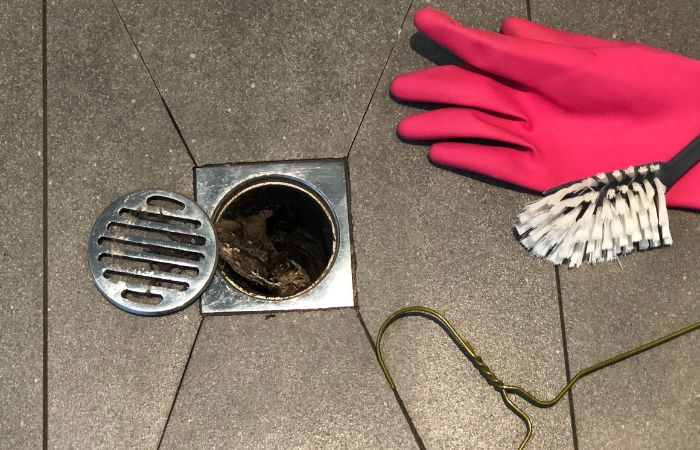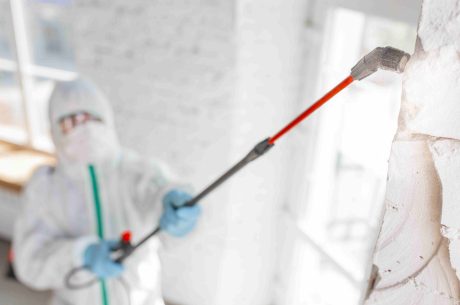Floor drains are an essential component of any plumbing system. They are designed to keep water from pooling in your home or business, ensuring that the area is safe and dry. Unfortunately, if not maintained properly, floor drains can become clogged and even cause damage to your property.
In this blog post, we’re here to help you learn how to maintain your floor drain correctly so that it functions as intended. But first things first, let’s understand what a floor drain really is.
What Is a Floor Drain?
A drain is a plumbing fixture generally designed to remove liquid from an indoor space. It connects to the sewer line and is often found in basements, bathrooms, laundry rooms, garages, and other areas with standing water or condensation. Plumbing drains are usually made of metal or plastic and come equipped with a strainer basket to catch debris before it enters the drainage system. The purpose of having a drain is to prevent flooding by allowing excess liquids to be quickly removed from the area.
Plumbing drains can vary greatly in size depending on their location and intended use, but they all share one common feature: A trap that seals off any gases that may have been released into the environment as waste passes through it. This helps keep noxious odors out of living spaces while also preventing dangerous materials like methane gas from entering back up into the home’s atmosphere.
Benefits of Proper Maintenance
Maintaining drains is essential for any plumbing system. Proper maintenance can provide numerous advantages, ranging from long-term benefits to reduced repair costs. Let’s take a look at some of the key benefits of maintaining drains:
- Prevents clogs: Regular maintenance helps prevent clogs in the drainpipe. By removing debris, sediment, and other materials that can accumulate over time, you ensure that the drain can effectively and efficiently remove liquids from the area.
- Reduces odors: Cleaning the drain and removing any trapped materials or stagnant water helps prevent unpleasant odors from emanating from the drain. Proper maintenance ensures that the trap remains sealed, preventing gases from escaping into the living space.
- Avoids water damage: By keeping the drain clear and functioning properly, you minimize the risk of water damage to your property. A well-maintained drain ensures that excess water or liquid is promptly removed, reducing the chances of leaks, mold growth, and structural damage.
- Extends drain lifespan: Regular maintenance can extend the lifespan of your drain. By keeping it clean and free from debris, you reduce the strain on the drainpipe and components, potentially prolonging their durability and efficiency.
- Cost-effective: Proper maintenance of your drain can help you avoid costly repairs or replacements. By preventing clogs and addressing any issues early on, you save money in the long run by avoiding major plumbing problems.
Now that we’ve discussed the benefits of maintaining drains, let’s delve into the specific steps you can take to properly maintain them.
Pre-Installation Considerations

Before installing a drain, there are a few considerations to keep in mind to ensure proper maintenance:
– Proper Placement
Determine the optimal location for your drain based on the area’s water flow and potential sources of liquid. Consider factors such as plumbing connections, proximity to fixtures, and the slope of the floor to ensure efficient drainage.
– Correct Drain Size
Choose an appropriately sized drain that can handle the expected volume of water. Larger drains are suitable for areas with high water flow, such as commercial kitchens or industrial settings, while smaller drains are sufficient for residential bathrooms or laundry rooms.
– Accessible Cleanouts
Install a cleanout point near the drain for easy access during maintenance or cleaning. A cleanout provides a convenient entry point to remove any blockages or debris that may accumulate in the drainpipe.
– Proper Slope and Venting
Ensure that the drain is installed with the correct slope to promote efficient drainage. The drain should be slightly sloped towards the sewer line or sump pit to prevent water from pooling. Additionally, proper venting is essential to maintain the proper air pressure and prevent the drain from becoming sluggish or emitting foul odors.
Cleaning and Maintenance Tips
Cleaning and maintaining a drain is essential to keep it working properly. Unfortunately, not all property owners are aware of the proper drain cleaning and maintenance. Follow these tips to ensure the optimal condition of your drain:
- Regular Cleaning: Clean the strainer basket or cover of your drains regularly. Remove any debris, hair, or other materials that may have accumulated in the basket. Wipe the cover or strainer with a cloth or brush to ensure it’s clean and free from any blockages.
- Flushing with Water: Occasionally, flush your drain with a large volume of water. This helps to remove any sediment, dirt, or buildup that may have been collected in the drainpipe. You can use a hose or bucket to pour water into the drain, allowing it to flow freely through the system.
- Enzymatic Cleaners: Use enzymatic drain cleaners periodically to break down organic materials like hair, soap scum, and grease that may accumulate in the drainpipe. Make sure to follow the instructions on the cleaner’s packaging and use it as directed.
- Avoid Harmful Substances: Be cautious about what you pour down your floor drain. Avoid pouring chemicals, oil, grease, paint, or any other harmful substances into the drain, as they can cause clogs or damage to the drainage system. Dispose of these materials properly according to local regulations.
- Inspect for Leaks: Regularly inspect your floor drain for any signs of leaks or damage. Check for water stains, dampness, or foul odors around the drain area. If you notice any issues, contact a professional plumber to assess and repair the drain.
- Consider Drain Covers or Traps: Depending on the location and use of your drain, you may consider installing additional drain covers or traps to catch larger debris or prevent foreign objects from entering the drain. These accessories can help reduce the chances of clogs and improve the drain’s overall performance.
Final Thoughts
Properly maintaining your floor drain is essential for avoiding potential problems and ensuring your system works as it should. From pre-installation considerations to regular cleaning and maintenance tips, taking the time to do things right will save you from costly repairs. Even after installation, keep an eye out for any signs of damage or blockages so you can address them quickly before they become bigger issues.



